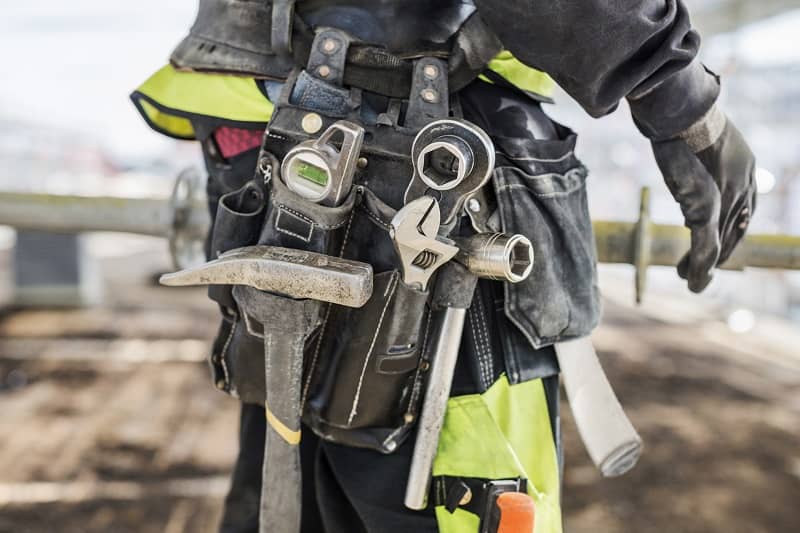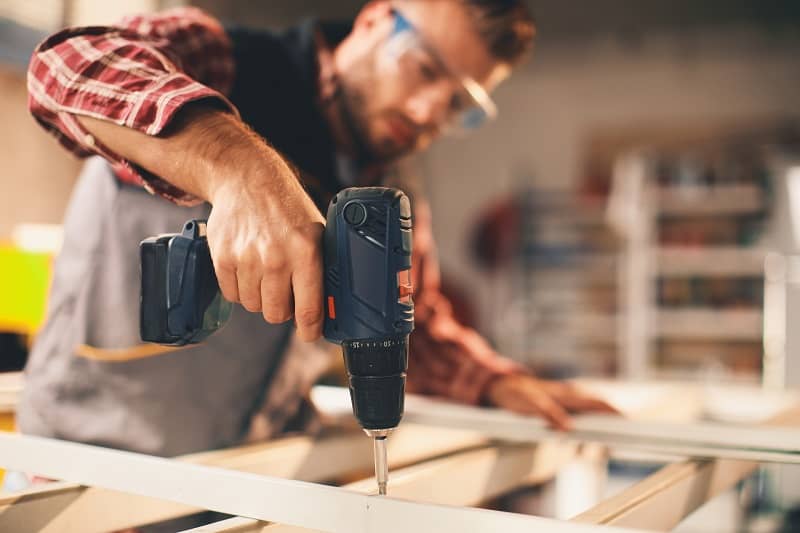The toolbelt is a mini-arsenal of essential equipment. It keeps a craftsman’s most prized tools within arm’s reach to keep projects running smoothly. As with any proper armament, the toolbelt requires proper planning, organizing, and strategizing to achieve perfection. Mastering the art of the toolbelt is essential for peak performance on the job site.
Take a few minutes to prep.
When you roll up to the job site, you’re ready to hit the ground running. You’re not interested in dilly-dallying, chit-chatting, or wasting time in any fashion. Still, that doesn’t mean picking up right where you left off the other day is the best approach. Taking just a few minutes to organize your toolbelt for the day’s challenges equips you with the tools you need on the job site. That way, you’re not always running back and forth to grab something you forgot.
Further Reading: The Science Behind Assembling the Perfect Toolbox
Keep the most-used tools accessible.
It’s true that different projects require varying types of equipment, but there is an elite class of essential tools that craftsmen need no matter what. We’re talking hammers, screwdrivers, measuring tapes, drills…you get the idea. When putting together the ultimate toolbelt, make sure to keep these most commonly-used tools easily accessible. A few extra seconds saved might not seem like a big deal until you multiply it by days, weeks, and even years.
Make sure you can move.
The general public would be surprised just how nimble, flexible, and mobile craftsmen have to be on the job site. On a daily basis, you contort your body in all sorts of ways to avoid obstacles and access out-of-reach spots. To prevent your toolbelt from becoming a hindrance, make sure you can still bend, squat, jump, and move comfortably while wearing it. You might have to adjust the waist size or weight if you’re too encumbered.
Play to your dominant hand.
Another crucial consideration when organizing your toolbelt is your dominant hand. You’ll want your hammers, screwdrivers, drills, and other hand-held equipment by your dominant hand while nails, screws, nuts, and other fasteners sit near your off-hand. A note when buying work gear: Lefties might need to buy specialized belts designed for left-handed people with metal loops, slots, and pockets in the “right” places.
Pick the right material.
Not every toolbelt is built the same. Different materials bring different advantages. Beyond that, craftsmen have varying preferences. Here are three of the most common toolbelt materials:
Leather – This classic toolbelt material delivers unbeatable durability and aesthetic appeal. You might have to cough up a little extra cash, but you can never go wrong with leather.
Nylon – Many modern toolbelts feature this versatile and lightweight material. They’re known for their comfort and longevity. Plus, nylon is incredibly easy to clean.
Synthetic – If you’re looking to save money while still getting the job done, opting for a toolbelt with synthetic materials is a great option. This material is cost-effective and respectably durable.
Keep things light.
It’s easy to underestimate how much stuff you’re putting in your toolbelt before you actually wear it. In reality, you don’t feel the actual weight of all those tools until you reach the end of the workday. Trying to moderate the weight in your toolbelt can help relieve back aches and pains, prevent potential injuries, and preserve more energy.
Always make adjustments.
Mastering the art of the toolbelt is an ongoing process. The more time you spend on the job site, the more insights you’ll have about the tools you need, the ideal weight, the perfect material, and more. Constantly making adjustments to your toolbelt will ensure you’re always moving towards achieving the perfect on-the-go arsenal of equipment.
Looking for the right tool to simplify the job-seeking process? We’ve got you covered! Madden Craftsmen is a leading industrial staffing expert that specializes in pairing talented craftsmen with premier employers. Take a look at our job search for immediate job openings in your local area.




